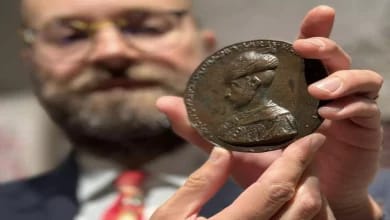Hagia Sophia Mosque Undergoes Historic Restoration
Discover how Türkiye is preserving the 1,500-year-old Hagia Sophia Mosque through one of the most extensive restorations in its history.
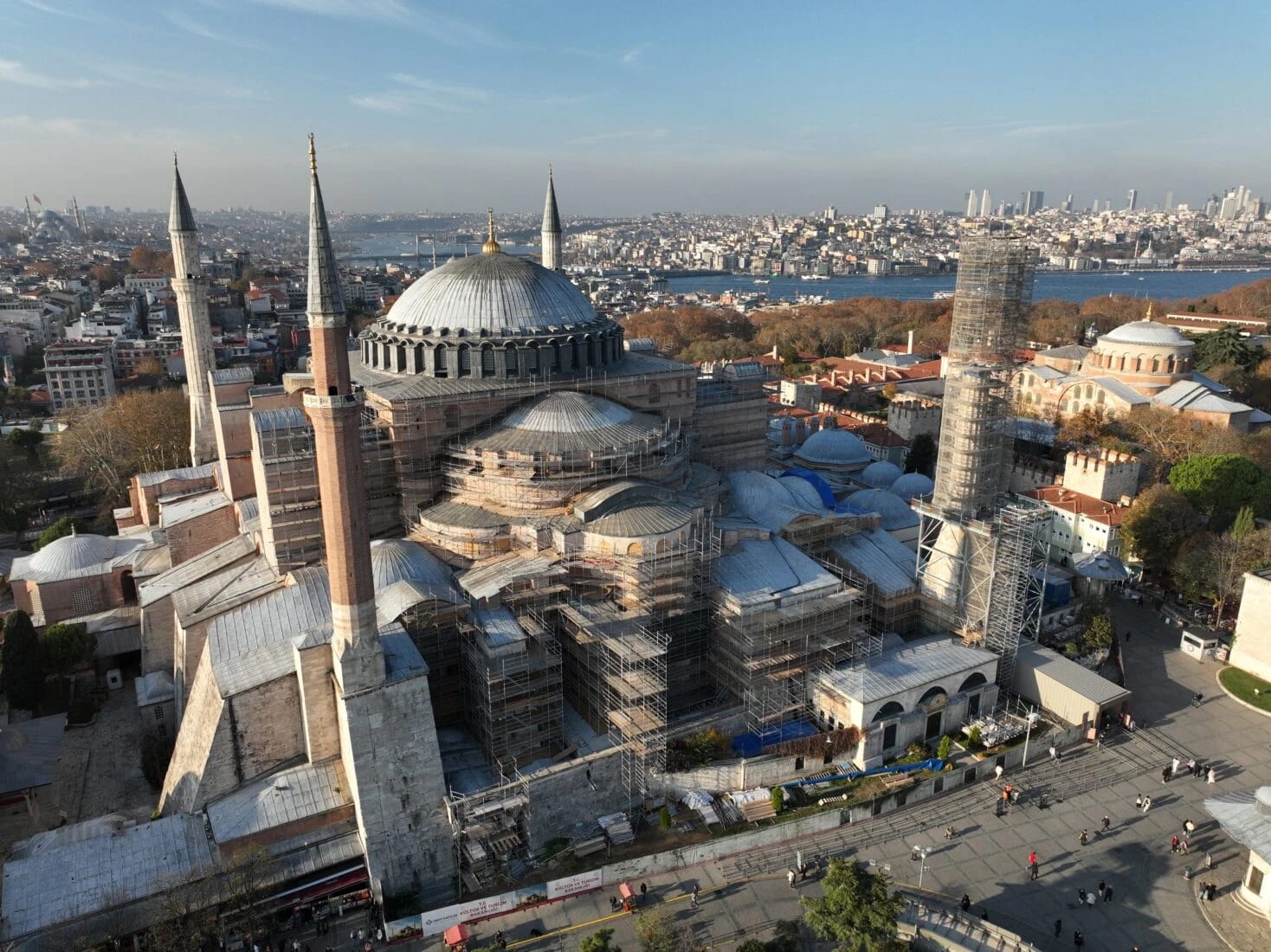
The Ayasofya-i Kebir Camii Sherifi (Hagia Sophia Mosque), a 1,500-year-old iconic masterpiece in Istanbul, continues to undergo one of the most comprehensive restorations of the Republic era. The first phase of this ambitious project, initiated by the Directorate General of Foundations under Türkiye’s Ministry of Culture and Tourism, has been successfully completed. Key historical structures, including the tombs, the primary school (sibyan mektebi), and the timekeeper’s room (muvakkithane), have been meticulously restored to their original condition.
The second phase of the restoration focuses on reinforcing the Bayezid II minaret, which had been partially dismantled due to structural cracks. Meanwhile, the eastern facade of the Ayasofya now stands encased in a towering scaffold, as workers remove low-quality plaster to uncover and preserve the original features of this UNESCO World Heritage Site.
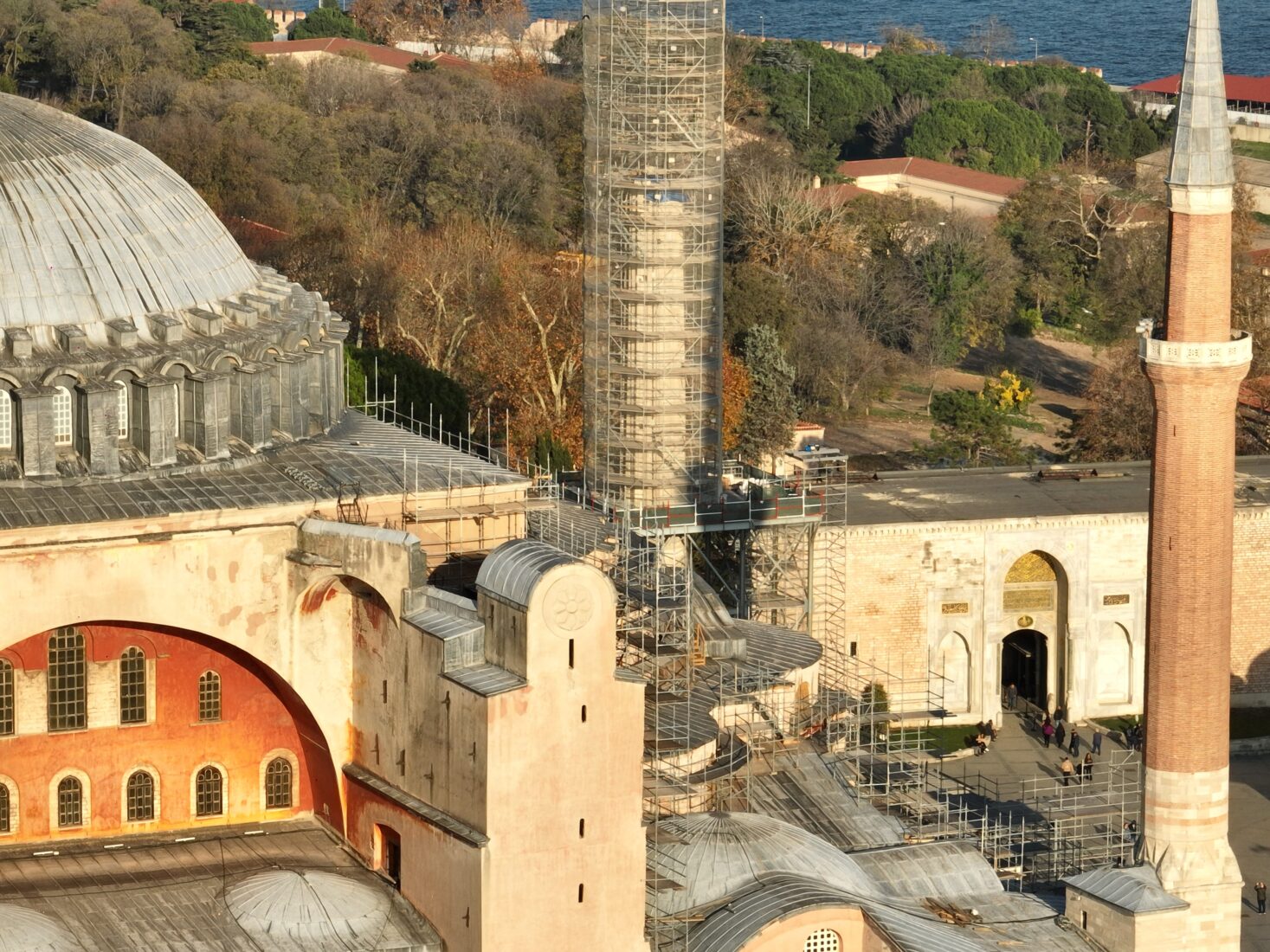
Bayezid II minaret strengthened for future generations
In February, efforts to restore the Bayezid II Minaret commenced with the construction of a steel scaffold. Initial inspections revealed cracks in the structure, prompting the dismantling of sections below the minaret’s gallery. Restorers, guided by a team of experts, determined that the structural integrity could no longer support further dismantling. The 64-meter-high minaret will now be strengthened using specialized techniques, ensuring its survival for generations to come.
Keriman Dursun, a civil engineer involved in the project, highlighted the measures taken: “We established a comprehensive safety zone around the site and utilized cutting-edge static modeling to decide on the reinforcement strategy. This minaret stands as a testament to the ingenuity of historical construction techniques and must be preserved as such.”
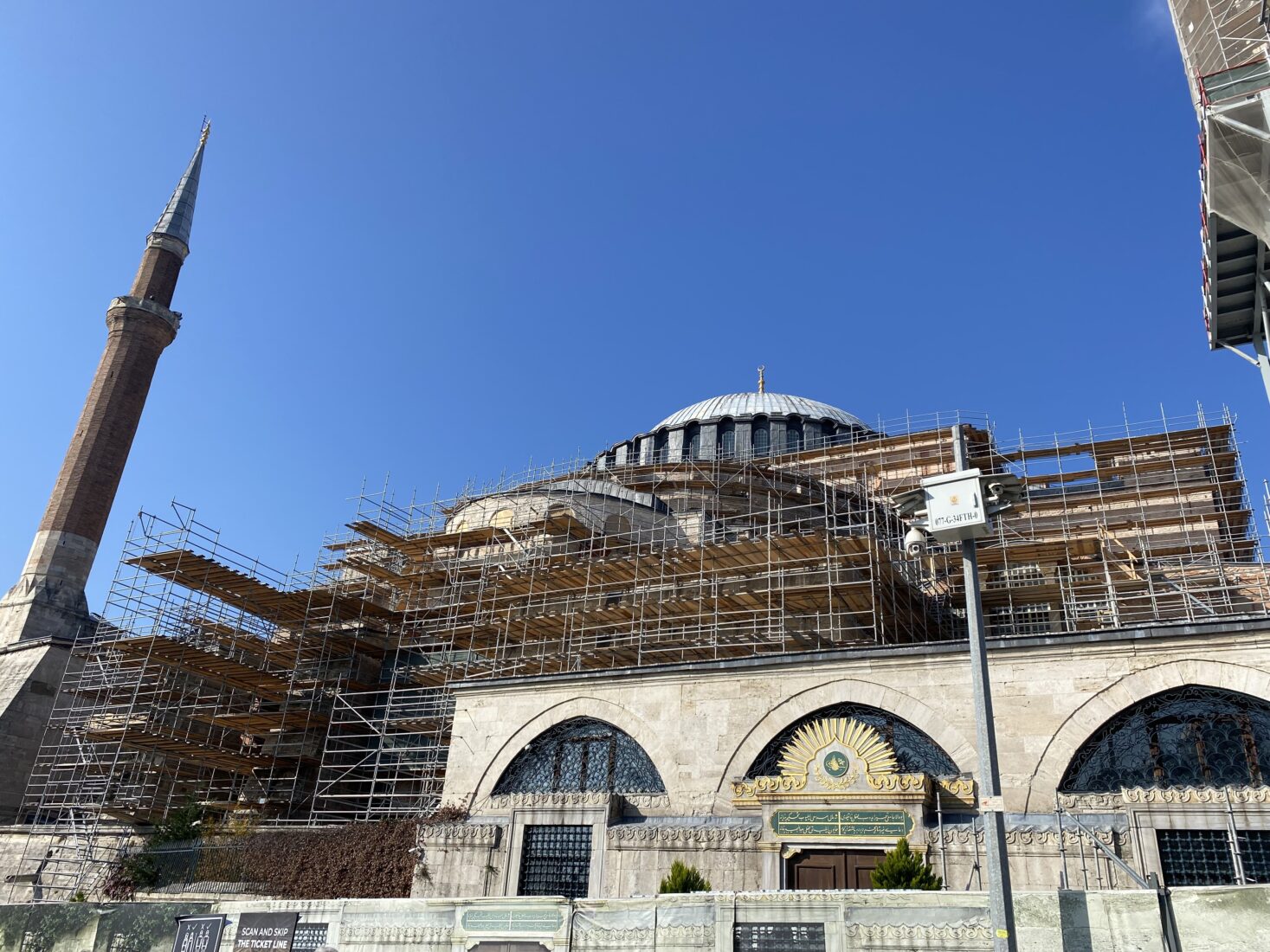
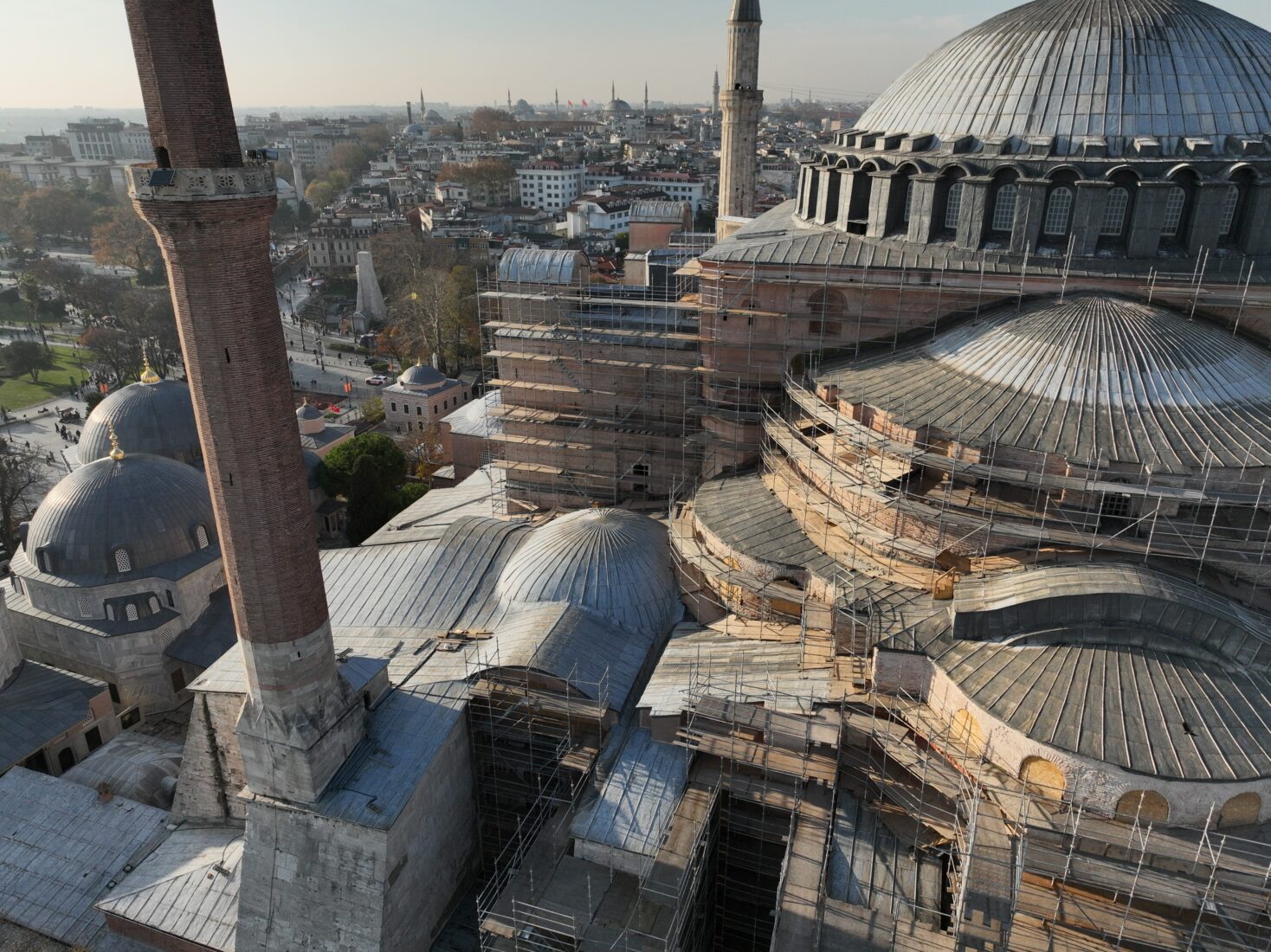
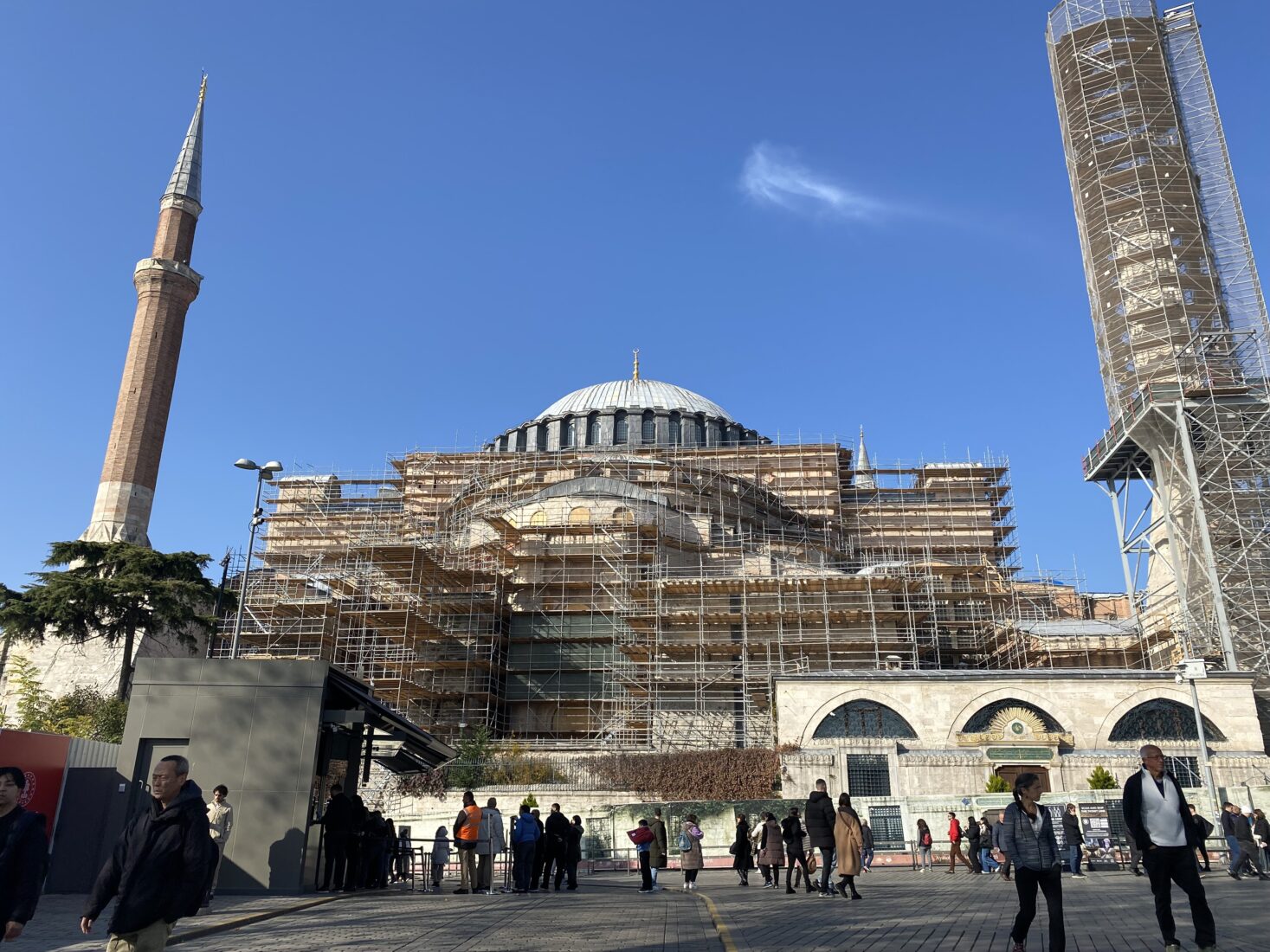
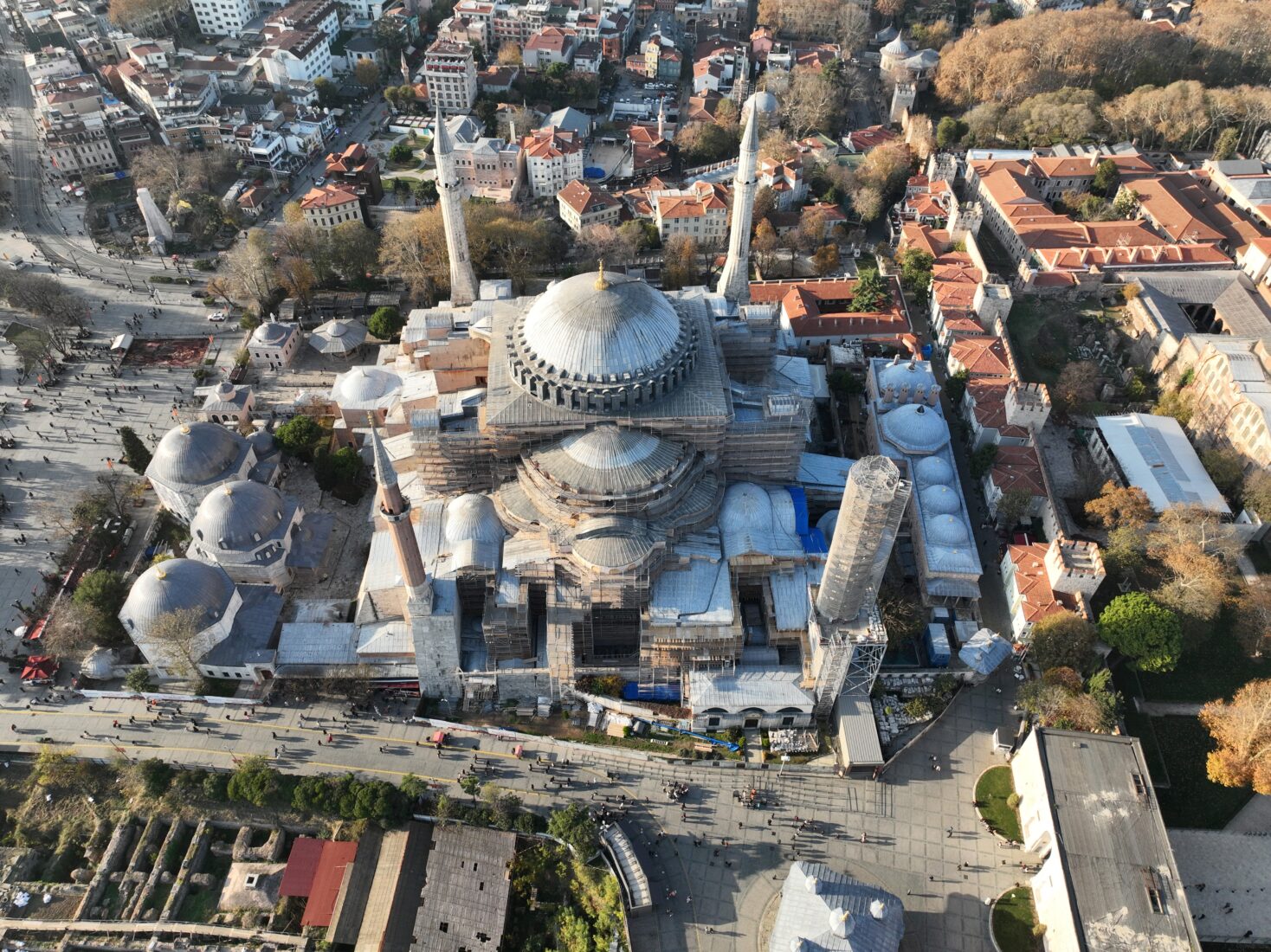
Preserving eastern facade
The eastern facade, facing the historic Ahmed III Fountain, is currently a focal point of restoration. Workers are meticulously removing low-quality plaster, performing detailed chronological analyses, and preparing the facade for new layers of authentic plaster. The process includes advanced techniques such as georadar scans to identify voids within the structural walls, ensuring that the building’s foundation remains sound.
Dursun provided insight into the intricate work: “The scaffold allows us to safely access critical sections of the facade. Every step, from material sampling to laboratory analysis, is carried out with precision to maintain the building’s originality. This process will ensure that the facade remains true to its historical essence.”
Innovative monitoring and analysis systems
As part of the restoration, advanced structural health monitoring systems are being installed throughout Ayasofya. These include sensors to measure vibrations, displacement, and crack progression, enabling engineers to track the building’s stability in real-time. “This data will be invaluable for making informed decisions about structural reinforcements,” Dursun noted.
Declared the most comprehensive restoration effort in Türkiye’s history, the project exemplifies a commitment to preserving cultural heritage. The restored sections of Ayasofya, including the tombs and the minaret, reflect the meticulous planning and dedication required to safeguard a monument that has witnessed the passage of millennia.
The restoration works underscore the determination to pass this monumental heritage site to future generations in a secure and preserved state, ensuring its historical and cultural legacy endures for centuries to come.




